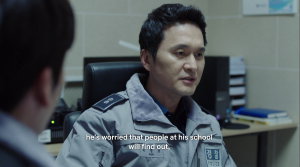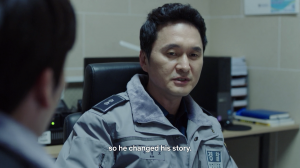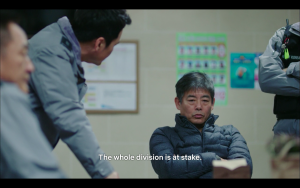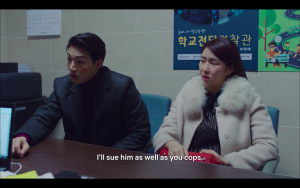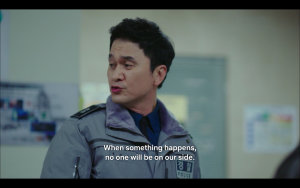Author: Sophie Rock
Synopsis:
In episode 13 of the South Korean police drama Live, the Hongil Police force finally catches the serial rapist they were searching for in previous episodes. Oh Yang-chon’s mother passes with use of “death with dignity,” and Gi Han-sol’s daughter gets married, still (like everyone else) unaware of her father’s sickness.
Discussion:
During episode 13, a small debate about whether or not police should be armed results in an inconclusive outcome. Later, when discussing the result of a previous police officer’s use of force, a definition appears on screen explaining “excessive use of force.” These examples highlight a larger ongoing global debate about gun control and the use of excessive force by the police, as well as a dilemma officers must face between discipline and their own safety.
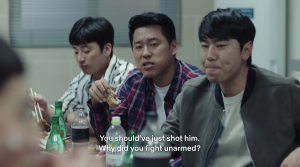

Gun use and access in South Korea is highly inaccessible. The KNPA estimate 84,414 privately owned guns in South Korea, which is only roughly 0.27% of the population (Jang 2018, 13). Even with such a small percentage of the population owning guns, it is reported that “all guns must be stored at the local police station, and all permits require extensive background checks… including documents to prove legitimate reasons for gun ownership, and physical and psychiatric assessments” (Jang 2018, 14). These regulations make gun access a seemingly nonissue for civilians, but how about the South Korean police?
When discussing the use of guns in Live, one police officer comments “When a cop uses a gun, it’s not the suspect who dies, we’ll [the police] die from the penalty” (ep. 13, 19:10). This may be due to the fact that individuals in South Korea have little access to guns, so the police should have little to worry about in terms of their safety (Ivkovic 2012, 93). But yet, in episode 13, a suspect was a trained martial artist, hence not requiring a gun to inflict harm upon officers. Although the use of weapons may seem justifiable, later in the episode, viewers are introduced to an ex-police officer, So Su-man, who was fired for his use of excessive violence (ep. 13, 38:17). Here, it is obvious that the penalties on officers who use unnecessary force is a prime concern in whether or not officers use weapons for their own safety.
The excessive use of force employed by South Korean police reigns supreme among civilian complaints (Kang 2011, 178). Despite this large complaint, the use of deadly force is relatively uncommon in South Korea, and if applied, it nearly immediately becomes a public issue (Ivkovic 2012, 98). Episode 13 highlights awareness by defining excessive force to its Korean viewership when being discussed. This suggests that this term is relatively new in Korean dialogue and may have become more of interest with the recent debates on the police force.
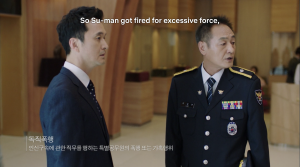
독직폭행- “A kind of violence that officials who have governmental power commit (such as arresting or imprisoning) by abusing their power.” Shin Haewon (UBC Student)
Episode 13 of Live highlights the concerns officers face in what types of force to employ, fearing more for the disciplinary action they will face, rather than their own safety. The conversations within the episode highlight the ongoing debate that is happening around the globe about police brutality and gun rights. When it comes to these debates, I ask you to consider the following:
- Should police officers be armed at all times?
- Do you feel more or less safe when a police officer is carrying a gun? Why do you think you feel this way?
- What steps and processes are necessary if an individual wishes to own a gun?
Word Count: 476
Bibliography:
Ivkovic, Sanja Kutnjak. “Police Integrity in South Korea.” Policing: An International Journal of Police Strategies & Management 35, no. 1 (2012): 76-103.
Jang, Ho Kyeong. “How South Korea got rid of its Gun Problem.” Published February 27, 2018. https://www.koreaexpose.com/how-south-korea-got-rid-gun-problem/
Kang, Wook and Mahesh K. Nalla. “Perceived Citizen Cooperation, Police Operational Philosophy, and Job Satisfaction on Support for Civilian Oversight of the Police in South Korea.” Asian Journal of Criminology 6, no.2 (2011): 177-189.





